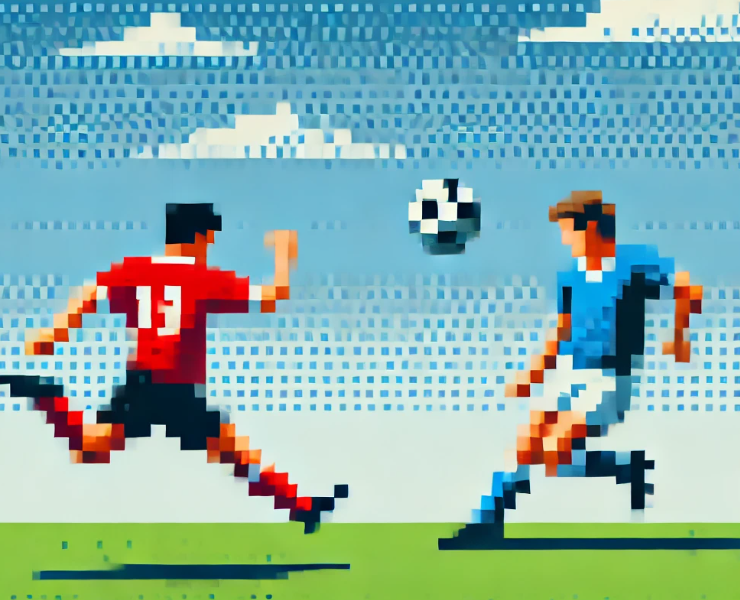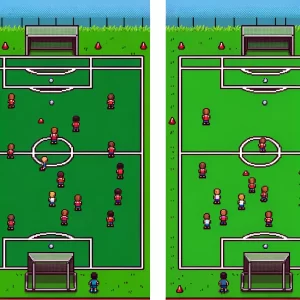
Sprinting and Soccer Success
What separates a winning soccer team from the rest? While tactics, talent, and teamwork are critical, new research highlights another game-changer: how players move on the field. Beyond goals and passes, the speed, distance, and accelerations players achieve can significantly influence their team’s success.
If you’re a coach looking to refine your training methods, a player aiming to improve performance, or a club leader focused on development, understanding these findings could transform your approach to the game.
The Science of Movement: What the Study Revealed
A recent study in the Turkish Super League analyzed locomotor demands—how players run, accelerate, and cover ground during matches—and their connection to team success. Researchers tracked 124 matches across three seasons, focusing on metrics like total distance covered, speeds at various thresholds, and the number of high-speed accelerations.
Here’s what they found:
- High-performing teams (HPE) consistently excelled in three areas:
- Total distance covered during matches.
- Running speeds between 4.01–5.5 m/s (medium-high intensity).
- Number of accelerations in the range of 5.5–7.0 m/s.
- The model used in the study accurately predicted team success 74% of the time, emphasizing how these physical metrics contribute to accumulating league points.
Why Does This Matter for Soccer Teams?
Locomotor demands aren’t just numbers—they reflect the physical and tactical discipline of a team. For example:
- Total Distance Covered: Indicates endurance and work rate. Teams that dominate possession or press aggressively tend to cover more ground.
- Medium-High Speed Running (4.01–5.5 m/s): Reflects strategic positioning and recovery. Maintaining this speed ensures players are effectively involved in transitions and counterplays.
- Accelerations (5.5–7.0 m/s): Crucial for creating goal-scoring opportunities or defending against quick attacks.
Practical Takeaways for Coaches and Players
How can you apply these findings in real-world soccer settings? Here are some actionable tips:
1. Train for Distance and Stamina
- Incorporate drills that replicate match conditions, such as small-sided games (again!) or interval running.
- Use tools like GPS trackers to monitor individual and team distance during practice.
- Gradually increase training intensity to improve endurance without risking fatigue.
2. Focus on Medium-High Speed Training
- Create position-specific drills that simulate match scenarios at speeds between 4.01–5.5 m/s.
- For example, midfielders can practice shuttle runs to mirror their role in transitioning between defense and attack.
3. Prioritize Acceleration
- Design sprint-based drills with explosive starts, such as cone-to-cone sprints or short-distance chases.
- Emphasize reaction time by adding dynamic stimuli, like responding to a coach’s whistle or a teammate’s pass.
4. Customize for Player Roles
- Recognize that different positions demand unique movement profiles. Forwards and wide players may need more high-speed drills, while defenders can benefit from medium-speed runs and recovery sprints.
5. Manage Player Workloads
- Use data to identify when players are overexerting themselves, reducing the risk of injury.
- Focus on recovery strategies, including active cooldowns, hydration, and nutrition.
Bigger Implications: Rethinking Team Strategies
This research not only informs individual training but also prompts clubs to rethink their overall strategies. For example:
- Youth Development Programs: Emphasize the physical metrics identified in the study to groom players for professional-level demands.
- Scouting and Recruitment: Look beyond technical skills and evaluate players’ physical performance, particularly their ability to maintain medium-high speeds and execute accelerations.
- Tactical Adjustments: Teams with limited physical capacity might prioritize possession-based strategies to minimize high-speed demands.
Bridging the Gap Between Science and Soccer
The study also raises important questions about how soccer integrates scientific insights. While many professional clubs already leverage data analytics, there’s room for improvement at the grassroots level. Accessible tools, like fitness trackers and performance apps, can democratize these insights, empowering amateur players and coaches to train smarter.
Your Turn to Kick It Off
What do you think about incorporating movement metrics into soccer training?
- How can your team balance physical demands with tactical priorities?
- Which of the tips above would you try in your next practice session?
- Are there specific challenges you face in tracking and improving player performance?
Share your thoughts in the comments or on social media! Let’s keep the conversation going and help every team perform at their peak.
By aligning your training strategies with science, you can ensure your team isn’t just playing the game but mastering it. Whether you’re running youth practices or competing at a professional level, these insights provide a competitive edge that could redefine your season.
Are you ready to delve deeper into the science and strategy of soccer?
This Week in Soccer offers you a unique blend of expert analysis, engaging infographics, and practical insights. Subscribe to our newsletter and stay ahead of the game with the latest in soccer analytics and coaching strategies. Make the move from spectator to strategist. Subscribe now!



